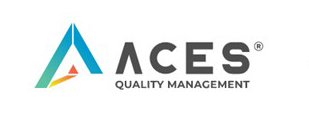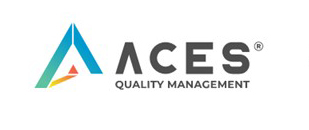
Sponsored Content from ACES Quality Management: Maximizing Servicing Revenue Requires Stringent QC Processes

Mortgage applications have been on the rise for the last three weeks. As we began the year at record-low applications since 1996, this is some much-needed optimism for the industry. However, 2023 is still expected to be a challenging environment. Fannie Mae projects that single-family mortgage origination volume for 2023 will decline 20% from $1.66 trillion to $1.33 trillion, along with a 20% decline in home sales. As a result, margins will continue to be lean as origination activity slows and lenders earn less per loan. Thus, other revenue streams become even more critical in an environment where lenders are hunting for every loan.

Many lenders will look to their servicing revenue to carry them through this market. However, lenders must shore up their quality control processes to rely on that revenue confidently. ACES’s most recent QC trends report shows that total origination costs have reached a historic high of $10,937. Lackluster quality control standards and low-quality loan originations directly impact this production cost. Servicers need to meet requirements from CFPB, the GSEs and state and local regulators – which requires technology that can be quickly adapted as new rules emerge.
Limited English proficiency is a recent item from the CFPB’s servicing guidance that has received less attention. In addition to ensuring servicers are providing good customer service to borrowers and adhering to all loss mitigation regulatory requirements, the CFPB will also examine how servicers communicate with borrowers for whom English is not their primary language. This has been a recurring topic over the past several years, most recently with Fannie Mae and Freddie Mac, so servicers need to take a closer look at how they handle both written and verbal communications for non-English-speaking borrowers.
Fortunately, QC is a crucial area where lenders can see immediate returns from easy-to-implement audit and compliance technology built for the current mortgage lending operation. This begins with regularly assessing the integrity of servicing portfolios and staff to ensure they adhere to all relevant servicing rules, guidelines and regulations. In putting their best foot forward to build quality control lines of defense, lenders can maintain loan quality and mitigate risk.
To counteract the inherent servicing risks, your risk management team needs to identify your institution’s specific risk areas. From there, your internal audit team should ensure that the proper processes and procedures are in place to address those risks. Then it is up to the QC team from a transactional standpoint to ensure your organization is doing what you say you’re doing and taking action toward those risks. These teams will need to rely on updated technology to stay on top of regulatory changes and communicate effectively with other internal stakeholders. Using traditional methods, such as manual tracking and spreadsheets, makes this process all the more error-prone and overwhelming. The baseline of defense is to make sure technology and staff are up to the challenges ahead.
With established standards, servicers should examine their existing policies and procedures to ensure compliance. Suppose adjustments must be made to align these with current rules and regulations. In that case, those need to be documented so that lenders can show evidence of self-identification and self-correction in the event of an examination. ACES Quality Management was the first to incorporate Fannie Mae’s updated guidelines into ACES Quality Management & Control software and through our free Compliance NewsHub to ensure clients could audit to the latest standards and guidelines.
Lenders should also audit employee activities against their documented policies and procedures, identify any areas where policies and practices are not being followed and document corrective action taken to ensure future compliance. Lapses in QC on the origination side inevitably make their way down to servicing, forcing lenders to eat or repurchase loans because of a failure missed upstream, inevitably affecting the bottom line. If you are servicing or have a sub-servicer, then make sure you’re up to date on all of the findings on the lending side and take loan sampling seriously – 10% of a random sample is not enough. Servicers need to diligently identify pockets of risk and proactively correct them.
Servicers will always be responsible for the fallout from improperly originated loans or the use of poor underwriting standards. The industry experienced this firsthand with the FHA Streamline Refinance and other similar products. Invariably, we can expect increased delinquencies and more issues regarding straw buyers, etc. Not to mention, the cost of mortgage fraud is up almost 20% in the U.S. For every $1 lost to fraud, it costs $4.23 to address, an increase of 16.2% from 2020.
If you’re constantly re-evaluating where those risks are and have the data and the audit steps in place to ensure that you are covering those items – you’re in good shape. Given the cyclicality of the mortgage industry and changing requirements and regulations, servicing will always need constant recalibrations to ensure loan quality and mitigate risk. Now is the time to give your process a tune-up.
(Sponsored content includes material submitted independently of the Mortgage Bankers Association and MBA NewsLink and does not connote an MBA endorsement of a specific company, product or service. For more information about sponsored content opportunities, contact Bill Farmakis at bill@jlfarmakis.com or 203/834-8832.)
